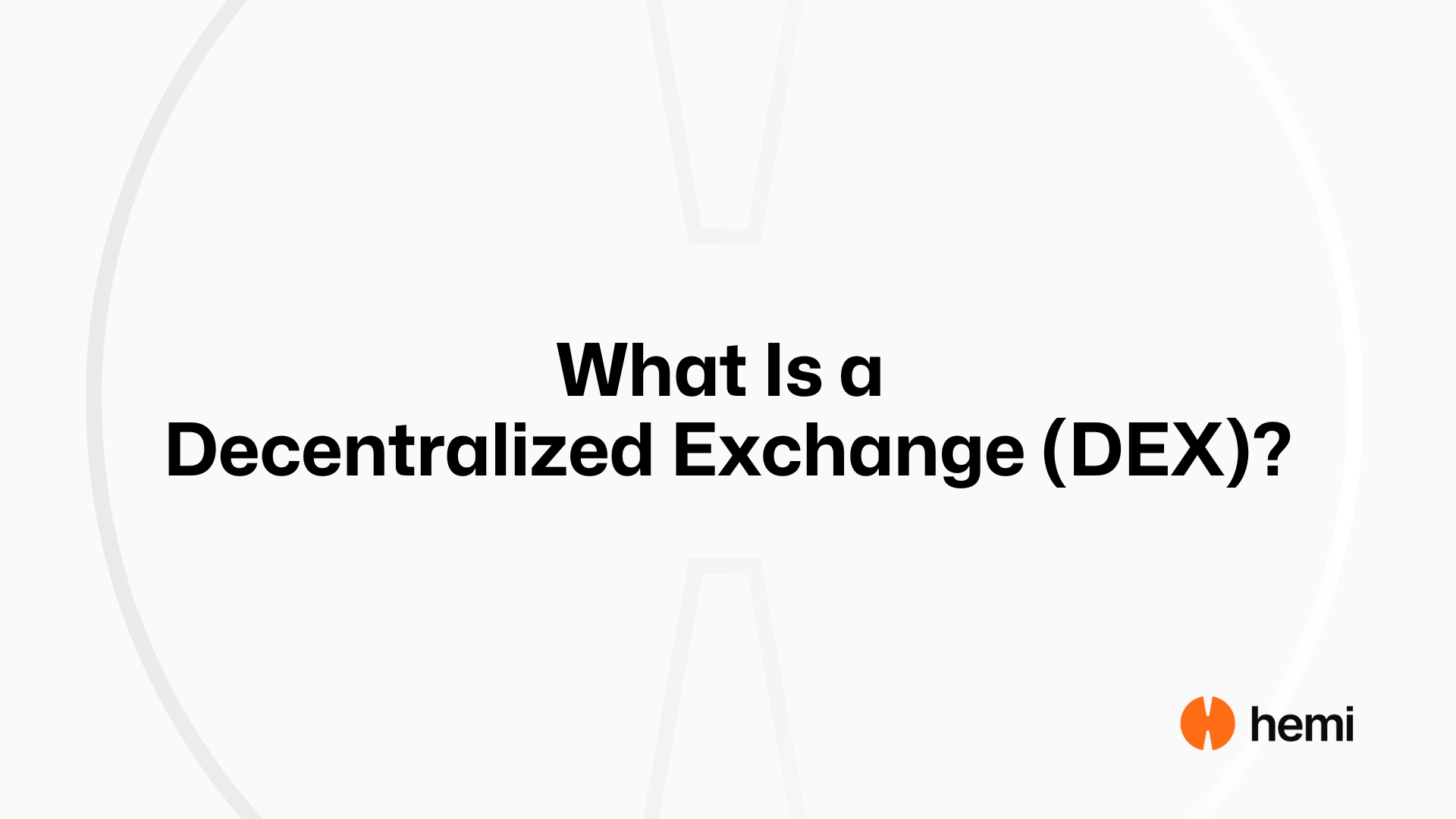- Bitcoin
- Ethereum
- Hemi
- Learn Center
- April 2, 2025
What Is a Decentralized Exchange (DEX)?
A guide to understanding DEXes and how they differ from traditional crypto platforms

A decentralized exchange (DEX) is a type of cryptocurrency trading platform that allows users to buy and sell digital assets directly with each other without relying on a central authority. Instead of using an intermediary like a bank or a centralized exchange (CEX), a DEX runs on blockchain protocols and smart contracts that automate trades in a secure, peer-to-peer environment.
This model gives users full control over their funds and trading activity. It also reduces the risk of hacks, freezes, or misuse of assets by centralized custodians. For many in the crypto space, decentralized exchanges represent a core part of the shift toward decentralized finance (DeFi).
How a DEX Works
At the heart of any decentralized exchange is smart contract infrastructure. These self-executing programs, built mostly on blockchains like Ethereum, allow trades to happen automatically when certain conditions are met. Unlike centralized exchanges, which manage order books and custody funds, a DEX simply connects traders through code.
There are two main types of DEX designs:
- Automated Market Makers (AMMs): These use liquidity pools rather than traditional order books. Users deposit assets into pools, and trades happen against those pools. Pricing is determined algorithmically. Examples include Uniswap, Curve, and Balancer.
- Order Book DEXes: These mimic the structure of centralized platforms more closely, with buyers and sellers placing bids and asks. Some operate entirely on-chain, while others use hybrid models with off-chain order books but on-chain settlement. Examples include dYdX and Loopring.
Benefits of Using a Decentralized Exchange
A DEX offers several advantages over centralized alternatives:
- Custody of funds: Users hold their own private keys. No centralized entity controls user assets.
- Privacy: Most decentralized exchanges don’t require know-your-customer (KYC) verification, which appeals to users seeking anonymity.
- Censorship resistance: DEXes are open protocols. There’s no centralized party that can block trades or freeze accounts.
- Global access: Anyone with a crypto wallet and internet connection can use a DEX. There are no account approvals or regional restrictions.
Risks and Tradeoffs
While decentralized exchanges offer more control, they also come with challenges:
- User responsibility: You’re in charge of your own funds and private keys. Losing access means losing your crypto.
- Slippage and front-running: Poor liquidity or slow block times can lead to bad prices, especially on smaller DEXes.
- Smart contract bugs: A flaw in the code can be exploited, draining funds from pools or breaking trading logic.
- Limited fiat onramps: DEXes typically don’t support direct deposits or withdrawals in government-issued currencies.
The Role of DEXes in DeFi
DEXes are a foundational layer of DeFi, enabling permissionless and trust-minimized trading of tokens. They support functions like yield farming, staking, liquidity provision, and token swaps. Many DeFi protocols integrate directly with DEXes to power lending markets, stablecoin trading, and synthetic asset creation.
As decentralized exchanges evolve, they’re expanding into new areas like derivatives, perpetual futures, and cross-chain swaps. The growth of Layer 2 networks like Arbitrum and zkSync also helps DEXes scale by reducing transaction fees and settlement times.
A decentralized exchange, or DEX, offers a trustless, user-controlled way to trade cryptocurrencies. It is a key part of the broader DeFi ecosystem and reflects the ethos of decentralization that underpins blockchain technology. While they come with tradeoffs, DEXes are rapidly gaining traction as secure, transparent alternatives to traditional crypto platforms. Whether you’re swapping tokens, earning yield, or building a new DeFi app, understanding how DEXes work is essential.